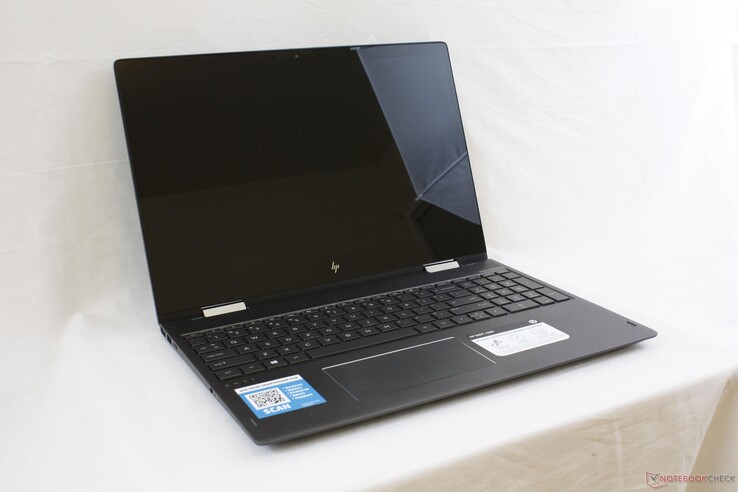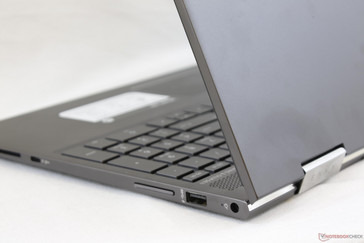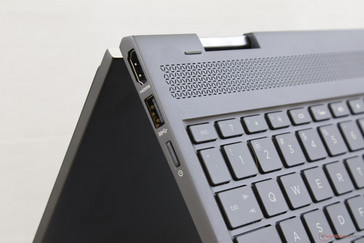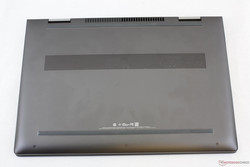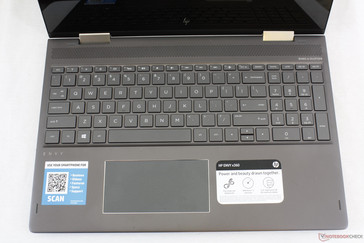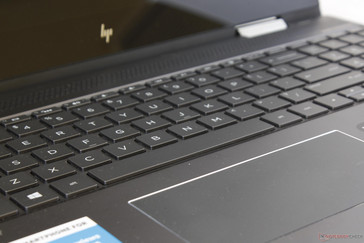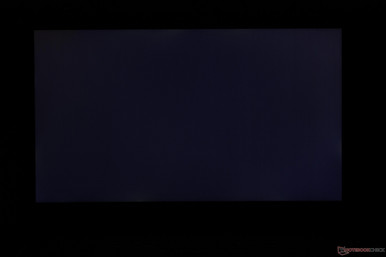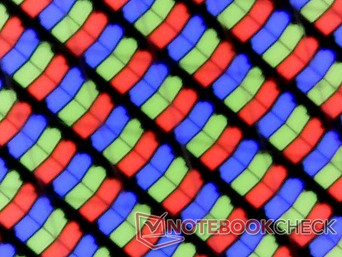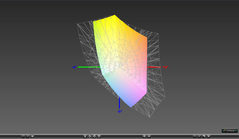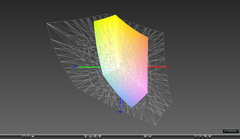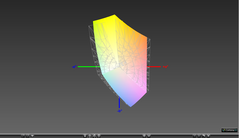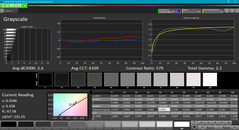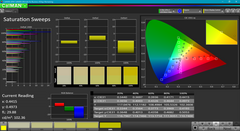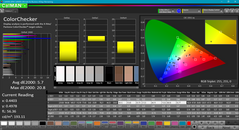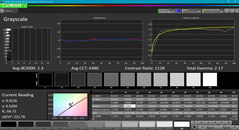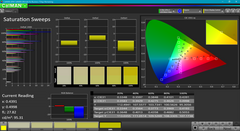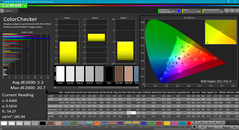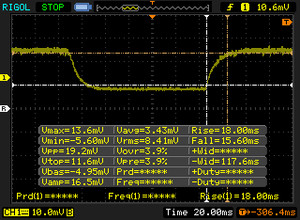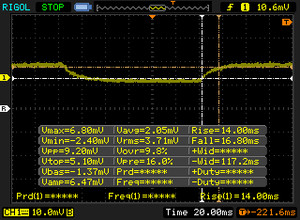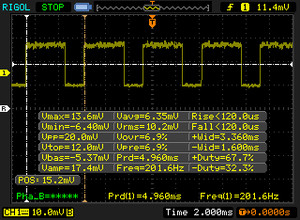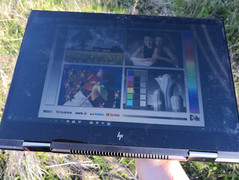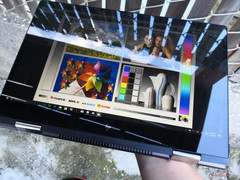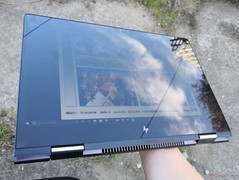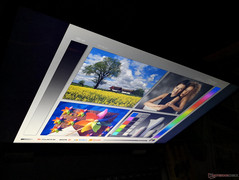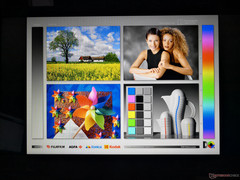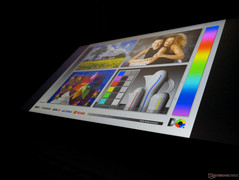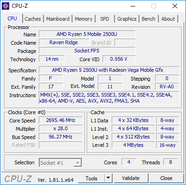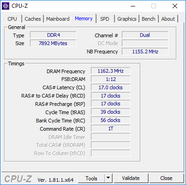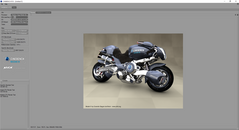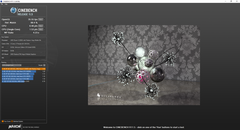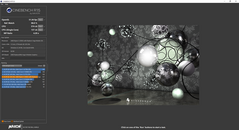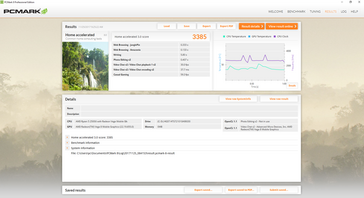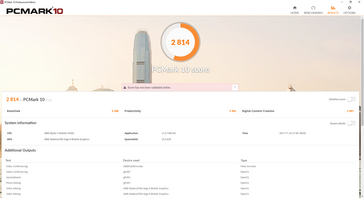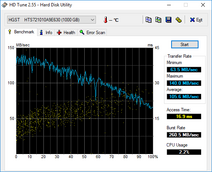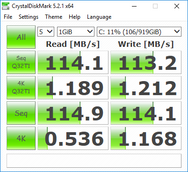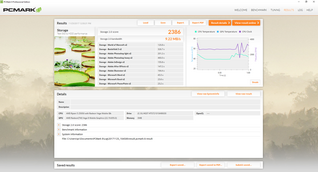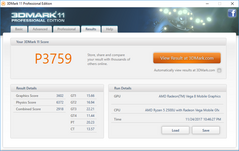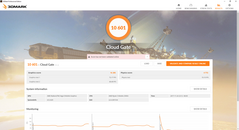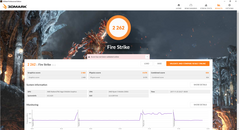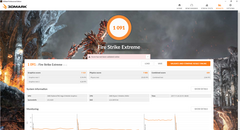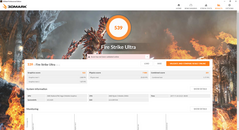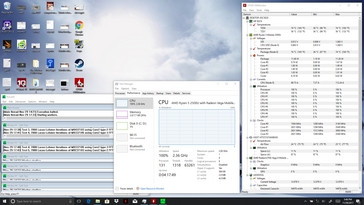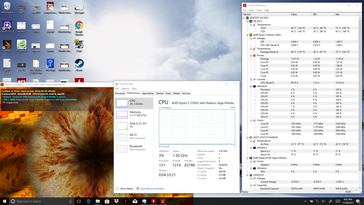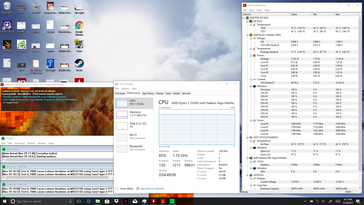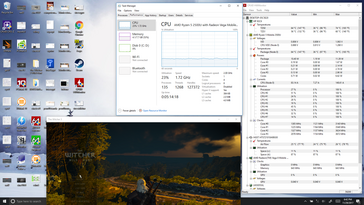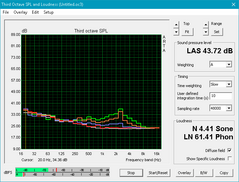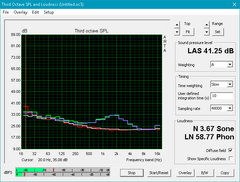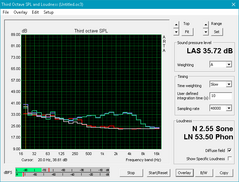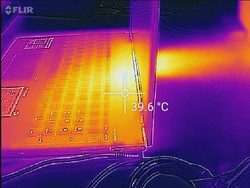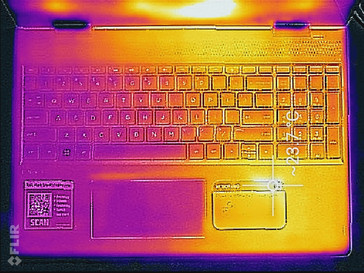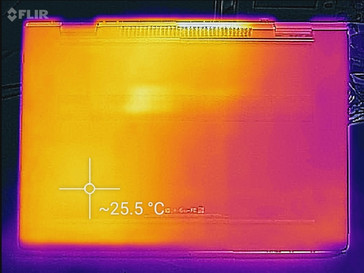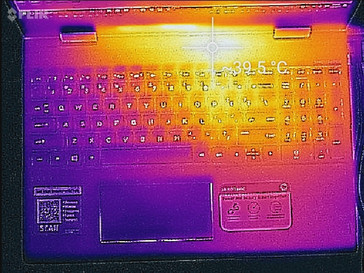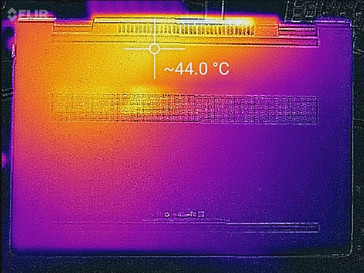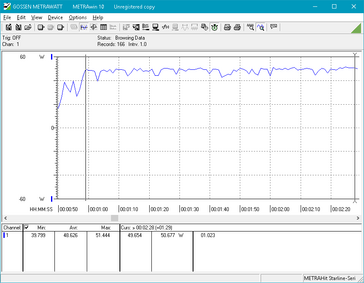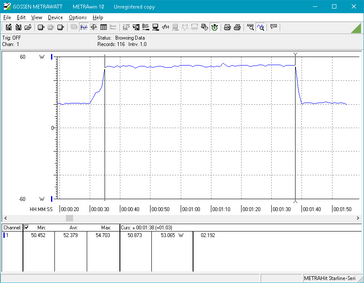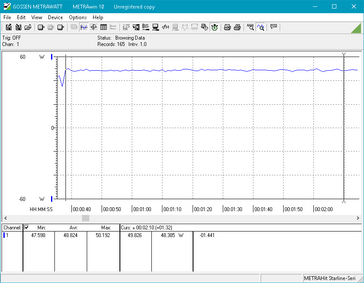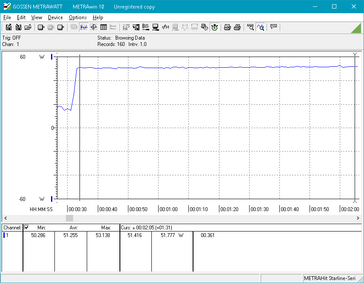HP Envy x360 15 (Ryzen 5 2500U, Radeon Vega 8) Laptop Review

When AMD formally introduced the Raven Ridge platform in October, major manufacturers like HP, Acer, and Lenovo were listed as key backers of the Ryzen Mobile platform. Only one, however, has managed to launch a notebook equipped with AMD's latest APU in time for the 2017 Holiday season. The HP Envy x350 15 is one of the first commercially available notebooks with the Ryzen 5 2500U APU to directly challenge Intel's Kaby Lake-R platform in the thin-and-light category. The chassis is not entirely new as HP has been offering this same design with the Core i7-8550U CPU for months, but it is nonetheless a significant chassis update to last year's Envy x360 15.
Available SKUs of the AMD-based Envy x360 15 are understandably very limited. Options that are normally configurable, such as the CPU and display, are instead fixed at the Ryzen 5 2500U APU and 1080p IPS touchscreen. In comparison, this exact same Envy X360 15 system with Intel Kaby Lake-R has multiple CPU and display options that may be more desirable for potential buyers.
The AMD system we have today is the entry-level SKU retailing for about $700 USD. Direct competitors in this 15-inch convertible category are becoming increasingly common with models such as the Asus VivoBook Flip 15, Dell Inspiron 15 5578, Lenovo Yoga 720-15IKB, and HP's own Spectre x360 15 series as notable examples.
Case
Similar to the jump from the Spectre 13 2016 to the Spectre 13 2017, the jump from the Envy x360 15 2016 to the Envy x360 15 2017 is defined by HP's "micro-edge" narrow bezel design to offer an immense boost in the screen-to-body ratio of the display. The system is consequently smaller in footprint, more attractive in design, and potentially lighter in weight because of its 8 mm-thin bezels compared to thick-bezel convertibles that have yet to make the transition. Its all-aluminum materials return from last year's model sans the brushed surfaces to look more like HP's higher-end matte Spectre series instead. We don't mind the change as rigidity is still excellent around the base with just minimal side-to-side flexing and warping down the center of the keyboard. Visually, the notebook fits its role as the midway point between the cheaper Pavilion x360 15 and the pricier Spectre x350 15.
Perhaps the worst physical aspect of the new design is its dual hinges. They feel weaker than the hinges of the Yoga 720 series and are more susceptible to movement when lifting and transporting the notebook. Stiffness is not distributed evenly throughout; the display tends to "fall" once it passes an angle of about 140 degrees or so. The hinges are just barely enough to prevent teetering whilst typing on a flat table and not much more. Otherwise, the lid itself is strong with minimal side-to-side twisting and light-moderate warping when applying pressure down its outer center. The Spectre x360 family is still the more unyielding system overall and the one to beat in the larger convertible space.
Construction quality is perfect on our particular unit as we can notice no unintended gaps or defects between materials or around the hinges. Its sharper back corners and edges are nonetheless more vulnerable to nicks and bruises compared to the rounder corners of the Pavilion and Spectre equivalents.
Despite the noticeably smaller footprint from the narrow bezel design and thinner profile, the new Envy X360 15 still weighs almost as much as last year's Envy x360 15 for a very dense impression. Alternatives like the XPS 15 and Spectre x360 15 are thinner and lighter and even the Yoga 720 and new Acer Spin 5 convertibles have managed to incorporate GTX 1050 graphics without being any heavier or thicker. From this perspective, it's somewhat disappointing to not see more customizable options available.
Connectivity
Available ports are unfortunately closer to the Pavilion x360 than to the Spectre x360. In fact, there are now fewer options compared to last year's model as HP has dropped both the Ethernet port and one USB Type-A port in favor of a single USB Type-C Gen. 1 port. Users who want to output to a native 4K60 external monitor can still do so via the HDMI 2.0b port, but users who wish for Thunderbolt 3 may want to consider the Yoga 720 or Spectre x360 15 instead.
SD Card Reader
Average read rate from the spring-loaded card reader is typical for a mainstream notebook at just under 80 MB/s with our Toshiba Exceria Pro SDXC UHS-II test card. Transferring 1 GB worth of images to desktop takes about 15 seconds compared to almost half the time on the XPS 15 or Spectre x360 15.
A fully inserted SD card will protrude just 1 mm from the edge of the notebook for safe transporting.
| SD Card Reader | |
| average JPG Copy Test (av. of 3 runs) | |
| HP Spectre x360 15-bl002xx | |
| Dell XPS 15 9560 (i7-7700HQ, UHD) | |
| HP Envy x360 15m-bq121dx | |
| MSI GS63VR 7RF-228US | |
| maximum AS SSD Seq Read Test (1GB) | |
| Dell XPS 15 9560 (i7-7700HQ, UHD) | |
| HP Spectre x360 15-bl002xx | |
| HP Envy x360 15m-bq121dx | |
| MSI GS63VR 7RF-228US | |
Communication
HP has surreptitiously swapped out the Intel 8265 module found on the Intel variant of the Envy x360 15 for the slower RealTek B822 WLAN module for the AMD variant. Real-world transfer rates when standing one meter from our Linksys EA8500 test router is only about 473 Mbps compared to 600+ Mbps from the more common Intel 8265 or Killer 1535 alternatives. Furthermore, our unit exhibits frequent dropouts when connected to an 802.11n network but is otherwise steady when connected to an 802.11ac network. We can understand the desire for a non-Intel WLAN module on an AMD notebook, but to switch it for an inferior alternative is not acceptable.
Accessories
There are no included extras outside of the AC adapter and Quick Start guide. In contrast, the pricier Spectre notebooks will typically have velvet wipes and USB Type-C adapters at no extra charge. The lack of a proper Thunderbolt 3 port also means that the Envy x360 15 will not be fully compatible with most newer docking stations.
Maintenance
The bottom panel is secured by a set of T5 hex screws as well as a set of Philips screws hidden underneath the rubber footing. Servicing the notebook is made very difficult not only by the multiple screw types but also by the tightly latched edges and corners that even our flat edge was unable to safely remove without damaging the chassis. The HP Pavilion and Envy families have always been more difficult to service when compared to equivalent systems from the Lenovo Yoga or Dell Inspiron series and this latest Envy redesign does nothing to buck that trend.
Warranty
The standard one-year limited warranty applies with options to extend up to three years to cover accidental damages and remote services. Please see our Guarantees, Return Policies and Warranties FAQ for country-specific information.
Input Devices
Keyboard
Visually, the backlit keyboard keys (~34.3 x 10.0 cm) are sharper around the corners but are otherwise identical in layout and even tactility to last year's Envy x360 15. Feedback is still light with shallow travel and light-moderate clatter. Users accustomed to the keyboards of ThinkPad notebooks or most large gaming notebooks will find feedback to be slightly spongier and lighter than they are used to. The all-important Space key in particular could have benefited from being firmer when pressed.
A small but notable annoyance is the lack of any indicators for when toggling the Num Lock key. There is usually an LED indicator similar for Caps Lock keys or at least an onscreen software indicator, but no pre-installed features serve this purpose on our unit.
Touchpad
The wide trackpad (12.0 x 6.0 cm) is slightly smaller than it appears on the Spectre x360 15 (14.0 x 6.5 cm) likely to save on costs and to further promote the benefits of the pricier Spectre family. In practice, the 2:1 aspect ratio takes some getting used to because its height feels cramped relative to its width and vertical cursor movement may feel awkward as a result. The surface is otherwise smooth with excellent gliding and accuracy for slower movements.
The integrated mouse keys suffer from spongy feedback and shallow travel. The center of the trackpad flexes when applying moderate pressure and its keys feel soft as a result. The clickpads on the ThinkPad X1 Carbon and HP's own EliteBook series are firmer and with louder audible clicks when pressed.
Display
The Ryzen-based Envy x360 15 is limited to a 1080p IPS touchscreen whereas the Intel variants have 1080p and 4K UHD options. HP has once again sourced BOE Technology for its touchscreen but with a slightly different panel ID than last year's model. Consequently, display quality and colors are very similar between the two generations. This unfortunately means that the backlight is still relatively dim for a convertible and that the screen suffers from the exact same pulse-width modulation frequency as the older model. Users who may be sensitive to onscreen flickering may want to continue to avoid the Envy x360 15 series for this reason.
Contrast ratio is also similar to last year's model at around 1100:1. Interestingly, we recorded a much lower value of about 600:1 out of the box, but our calibration efforts have created a smoother grayscale for lower black levels and this is the number we've recorded for the table below. Texts and images appear crisp with a very slight tinge of graininess whereas most glossy panels exhibit no graininess at all. Backlight bleeding is present around the edges and corners but it is very minor and essentially unnoticeable when gaming or during video playback.
| |||||||||||||||||||||||||
Brightness Distribution: 88 %
Center on Battery: 230.2 cd/m²
Contrast: 1151:1 (Black: 0.2 cd/m²)
ΔE ColorChecker Calman: 5.7 | ∀{0.5-29.43 Ø4.78}
ΔE Greyscale Calman: 2.6 | ∀{0.09-98 Ø5}
57.9% sRGB (Argyll 1.6.3 3D)
37.5% AdobeRGB 1998 (Argyll 1.6.3 3D)
41.29% AdobeRGB 1998 (Argyll 3D)
58.3% sRGB (Argyll 3D)
39.97% Display P3 (Argyll 3D)
Gamma: 2.2
CCT: 6109 K
| HP Envy x360 15m-bq121dx ID: BOE06F9, IPS, 15.6", 1920x1080 | HP Spectre x360 15-bl002xx UHD UWVA eDP BrightView WLED-backlit , IPS, 15.6", 3840x2160 | HP Envy x360 15t-w200 BOE0679 , IPS, 15.6", 1920x1080 | Dell XPS 15 9560 (i7-7700HQ, UHD) IGZO IPS, 15.6", 3840x2160 | Lenovo Yoga 720-15IKB-80X7 Chi Mei CMN N156HCE-EN1, IPS, 15.6", 1920x1080 | |
|---|---|---|---|---|---|
| Display | 59% | 9% | 113% | 59% | |
| Display P3 Coverage (%) | 39.97 | 67.9 70% | 43.31 8% | 89.7 124% | 65 63% |
| sRGB Coverage (%) | 58.3 | 88.2 51% | 65 11% | 100 72% | 90.8 56% |
| AdobeRGB 1998 Coverage (%) | 41.29 | 64.4 56% | 44.75 8% | 100 142% | 65.8 59% |
| Response Times | -29% | -34% | -52% | 13% | |
| Response Time Grey 50% / Grey 80% * (ms) | 30.8 ? | 44 ? -43% | 56 ? -82% | 57.2 ? -86% | 29.6 ? 4% |
| Response Time Black / White * (ms) | 33.6 ? | 38.8 ? -15% | 28.8 ? 14% | 39.2 ? -17% | 26.4 ? 21% |
| PWM Frequency (Hz) | 201.6 ? | 1000 ? | 201.6 | 962 | 25510 ? |
| Screen | 36% | 0% | 21% | 6% | |
| Brightness middle (cd/m²) | 230.2 | 351.5 53% | 204.9 -11% | 370.1 61% | 300.9 31% |
| Brightness (cd/m²) | 222 | 336 51% | 190 -14% | 356 60% | 285 28% |
| Brightness Distribution (%) | 88 | 83 -6% | 82 -7% | 87 -1% | 92 5% |
| Black Level * (cd/m²) | 0.2 | 0.24 -20% | 0.203 -2% | 0.37 -85% | 0.24 -20% |
| Contrast (:1) | 1151 | 1465 27% | 1009 -12% | 1000 -13% | 1254 9% |
| Colorchecker dE 2000 * | 5.7 | 3.3 42% | 4.7 18% | 5.3 7% | 5 12% |
| Colorchecker dE 2000 max. * | 20.8 | 7.3 65% | 9.03 57% | 9.9 52% | 10.2 51% |
| Greyscale dE 2000 * | 2.6 | 1.9 27% | 3.86 -48% | 4.6 -77% | 7 -169% |
| Gamma | 2.2 100% | 2.09 105% | 2.36 93% | 2.31 95% | 2.34 94% |
| CCT | 6109 106% | 6784 96% | 6834 95% | 6284 103% | 6578 99% |
| Color Space (Percent of AdobeRGB 1998) (%) | 37.5 | 64.4 72% | 41 9% | 88.3 135% | 59 57% |
| Color Space (Percent of sRGB) (%) | 57.9 | 88.2 52% | 64 11% | 100 73% | 90 55% |
| Total Average (Program / Settings) | 22% /
32% | -8% /
-3% | 27% /
30% | 26% /
17% |
* ... smaller is better
Color space is narrow at just 58 percent and 38 percent of the sRGB and AdobeRGB standards, respectively. This is very disappointing considering that most multimedia notebooks like the Yoga 720 and HP's own Spectre x360 15 have wider gamuts and are capable of deeper and more accurate colors as a result. Digital artists may want to invest in an Ultrabook or Surface Book instead for more accurate colors.
Further measurements with a X-Rite spectrophotometer reveal an accurate grayscale out of the box. A color temperature of 6109K can be recorded which is warmer than the preset 6500K setting offered by the Radeon settings. Our calibration efforts improve grayscale, color balance, and color temperature across the board to be closer to sRGB standards as shown by our CALMAN results below. Unfortunately, colors become increasingly inaccurate at higher saturation levels due to the narrow color gamut of the panel. Blue and Magenta colors in particular seem to be more inaccurate than the other primary and secondary colors.
Display Response Times
| ↔ Response Time Black to White | ||
|---|---|---|
| 33.6 ms ... rise ↗ and fall ↘ combined | ↗ 18 ms rise | |
| ↘ 15.6 ms fall | ||
| The screen shows slow response rates in our tests and will be unsatisfactory for gamers. In comparison, all tested devices range from 0.1 (minimum) to 240 (maximum) ms. » 90 % of all devices are better. This means that the measured response time is worse than the average of all tested devices (20.2 ms). | ||
| ↔ Response Time 50% Grey to 80% Grey | ||
| 30.8 ms ... rise ↗ and fall ↘ combined | ↗ 14 ms rise | |
| ↘ 16.8 ms fall | ||
| The screen shows slow response rates in our tests and will be unsatisfactory for gamers. In comparison, all tested devices range from 0.165 (minimum) to 636 (maximum) ms. » 40 % of all devices are better. This means that the measured response time is similar to the average of all tested devices (31.6 ms). | ||
Screen Flickering / PWM (Pulse-Width Modulation)
| Screen flickering / PWM detected | 201.6 Hz | ≤ 99 % brightness setting | |
The display backlight flickers at 201.6 Hz (worst case, e.g., utilizing PWM) Flickering detected at a brightness setting of 99 % and below. There should be no flickering or PWM above this brightness setting. The frequency of 201.6 Hz is relatively low, so sensitive users will likely notice flickering and experience eyestrain at the stated brightness setting and below. In comparison: 53 % of all tested devices do not use PWM to dim the display. If PWM was detected, an average of 8108 (minimum: 5 - maximum: 343500) Hz was measured. | |||
Outdoor visibility is below average because of the dim backlight. At an average of just 222 nits, this would have been acceptable on a budget 15-inch notebook that costs half the price, but it is otherwise disappointing to see on a convertible notebook that is supposed to be more versatile than a vanilla laptop. The wide IPS viewing angles can only do so much to reduce the inevitable glare. Users who intend to use the notebook outdoors frequently may want to consider the brighter Spectre x360 15 or Yoga 720 instead.
Performance
The main attraction for this particular system is indubitably the 15 W - 25 W Ryzen 5 2500U APU with integrated Radeon RX Vega 8 graphics. Configurations with the Ryzen 7 2700U are not yet available but should be coming soon likely during the first or second quarter of 2018. AMD has finally dropped its controversial "module" core concept for the more traditional Simultaneous MultiThreading (SMT) technique that is comparable to Intel's Hyper-Threading technology. It's a "true" quad-core APU capable of 8 simultaneous threads not unlike the Kaby Lake-R series. Processor clock rate idles at 1.48 GHz when on Power Saver mode and can run up to 2.6 GHz and 3.6 GHz in multi-threaded and single-threaded operations, respectively, according to Task Manager.
The integrated RX Vega 8 GPU is notable for being based off of AMD's latest Vega architecture to supplant the Polaris generation. It is particularly interesting because of its performance; the Ryzen 5 2500U APU itself is targeting Kaby Lake-R, but the integrated Vega GPU is closer to Intel's Iris Pro series rather than the UHD Graphics series.
We recommend checking out our dedicated preview page on the Raven Ridge platform for more information on AMD's mobile Zen series.
Processor
CPU performance is nearly identical to the Core i5-8250U from Intel's latest generation of Kaby Lake-R processors. Before the advent of Ryzen Mobile, AMD was generations behind Intel in raw CPU power with even the FX-9830P falling short of the very old Haswell Core i5-4200U. The Ryzen 5 2500U finally gives the red chipmaker a competent alternative to Intel's mainstream CPU lineup for Ultrabooks. Multi-thread performance is ahead of the dual-core i7-7500U by at least 50 percent according to CineBench R15 with comparable single-thread results. The 2500U also edges out the more demanding quad-core i5-7300HQ since this particular Intel CPU is lacking Hyper-Threading. Intel's answer to the aging i5-7300HQ will be the hexa-core Coffee Lake-H series coming early next year and it'll be interesting to see how much of a performance benefit it will have over the AMD 2500U.
Running CineBench R15 Multi-Thread in a loop results in steady scores over time as shown by the graph below. The 3 percent dip from the first run to the second run is minor compared to the 7 percent dip from the i7-8550U in the Spectre x360 15. CPU throttling is always a concern for low TDP designs in ultra-thin form factors, so we're glad to see it at a relative minimum here on AMD's premier Ryzen 5 notebook.
See our dedicated page on the Ryzen 5 2500U for more technical information and benchmark comparisons.
* ... smaller is better
System Performance
PCMark benchmarks are very disappointing with scores far below those of Kaby Lake-R notebooks. Even subjectively, system navigation and applications are sluggish and slow to launch almost as if the notebook was powered by an Atom SoC. Part of the reason is the primary HDD on our configuration whereas Kaby Lake-R notebooks are more often equipped with SSDs. We highly recommend investing in the SSD option to dramatically decrease boot up and load times.
Our HP system is also fatally buggy in addition to being very slow. We experienced multiple freezes and "white out" screens seemingly at random intervals throughout the entirety of our testing despite having updated both Windows and AMD's graphical drivers to the latest at the time of writing. Most of the crashes would occur during benchmarks involving FurMark or system monitors not unlike on the desktop Ryzen CPUs, but some would even occur whilst browsing or word processing.
| PCMark 8 Home Score Accelerated v2 | 3385 points | |
| PCMark 10 Score | 2814 points | |
Help | ||
Storage Devices
A total of two internal storage bays are available in the form of a 2.5-inch SATA III bay and a M.2 2280 slot. Our base configuration ships with a 1 TB Hitachi HDD while options exist for up to a 1 TB M.2 NVMe SSD.
A primary SSD is the keystone to a fast and responsive system. Unfortunately, this primary HDD contributes to the sluggish performance of the Envy even if average transfer rates are decent at about 106 MB/s. It's strange that HP offers no middle-ground for those who want something faster than a primary 7200 RPM HDD but slower than a NVMe SSD. A standard 256 GB SATA III SSD SKU in place of our base 1 TB HDD SKU, for example, would have made for a much smoother user experience. It's absolutely ridiculous that a cold boot can take upwards of 40 seconds or more on a modern mainstream convertible such as this.
See our table of HDDs and SSDs for more benchmark comparisons.
| HP Envy x360 15m-bq121dx HGST Travelstar 7K1000 HTS721010A9E630 | HP Omen 15-ce002ng Samsung PM961 MZVLW256HEHP | Xiaomi Mi Notebook Pro i5 Samsung PM961 MZVLW256HEHP | HP Pavilion 17z 1EX13AV Avolusion MD1TBLSSHD | HP Pavilion 15z-bw000 Avolusion MD1TBLSSHD | |
|---|---|---|---|---|---|
| CrystalDiskMark 5.2 / 6 | 14649% | 11981% | -5% | -8% | |
| Write 4K (MB/s) | 1.168 | 156 13256% | 150 12742% | 1.322 13% | 1.171 0% |
| Read 4K (MB/s) | 0.536 | 47.14 8695% | 36 6616% | 0.545 2% | 0.422 -21% |
| Write Seq (MB/s) | 114.1 | 1266 1010% | 1057 826% | 89.1 -22% | 108.6 -5% |
| Read Seq (MB/s) | 114.9 | 1419 1135% | 1074 835% | 91.4 -20% | 106.3 -7% |
| Write 4K Q32T1 (MB/s) | 1.212 | 486 39999% | 429 35296% | 1.239 2% | 1.145 -6% |
| Read 4K Q32T1 (MB/s) | 1.189 | 586 49185% | 441 36990% | 1.548 30% | 1.104 -7% |
| Write Seq Q32T1 (MB/s) | 113.2 | 1246 1001% | 1283 1033% | 90.3 -20% | 107.4 -5% |
| Read Seq Q32T1 (MB/s) | 114.1 | 3431 2907% | 1838 1511% | 88.3 -23% | 104.1 -9% |
GPU Performance
AMD's integrated graphics solutions are generally more developed than Intel's equivalent as exemplified by the current generation of AMD APU-based gaming consoles and the surprising Intel-AMD partnership. The Vega 8 is further proof of this with 3DMark scores just 13 percent behind Nvidia's GeForce MX150 and nearly 30 percent ahead of the Iris Pro Graphics 580 in the Fire Strike benchmark. The fact that AMD can come so close to the discrete MX150 while beating out one of Intel's best Iris Pro solutions under similar power envelopes shows AMD's commitment to iGPUs for the mainstream market.
See our dedicated page on the RX Vega 8 for more technical information and benchmark comparisons.
| 3DMark 11 Performance | 3759 points | |
| 3DMark Cloud Gate Standard Score | 10601 points | |
| 3DMark Fire Strike Score | 2262 points | |
| 3DMark Fire Strike Extreme Score | 1091 points | |
Help | ||
Gaming Performance
The impressive raw performance scores in 3DMark do not translate well into real-world gaming conditions. Whereas the Vega 8 is consistently ahead of the GeForce 940MX in the above 3DMark examples, the opposite is true during gameplay on most titles. Furthermore, the AMD GPU appears to be suffering from many of the same issues that plagued previous mobile Radeon mobile GPUs. A few titles would consistently fail to launch (Ashes of the Singularity, LOTR: Shadow of War) while native support for 768p output is not available. Frame rates are still ahead of the Skull Canyon NUC that Intel had boasted during its IDF 2016 keynote but still significantly slower than the GeForce MX150.
Gaming at native 1080p is not practical given the horsepower available from the integrated Vega 8 GPU and its poor driver support at the time of writing. Overwatch, for example, is not graphically demanding but still hovers around 40 to 50 FPS when at 1080p and with all graphical settings set to low. In comparison, the MX150 is more capable of offering a console-like 1080p30 experience whereas the Vega 8 still has an uphill battle against its own set of drivers.
| BioShock Infinite - 1920x1080 Ultra Preset, DX11 (DDOF) | |
| Acer Aspire E5-575G-549D | |
| HP Spectre x360 15t-bl100 | |
| Lenovo ThinkPad 25 | |
| HP Envy x360 15m-bq121dx | |
| Intel Skull Canyon NUC6i7KYK | |
| Apple MacBook Pro 13 2017 | |
| HP Pavilion 17z 1EX13AV | |
| Dell XPS 13 i7-8550U | |
| Samsung Notebook 9 NP900X3N-K01US | |
| Rise of the Tomb Raider - 1920x1080 High Preset AA:FX AF:4x | |
| HP Spectre x360 15t-bl100 | |
| Acer Aspire E5-575G-549D | |
| Lenovo ThinkPad 25 | |
| HP Envy x360 15m-bq121dx | |
| Intel Skull Canyon NUC6i7KYK | |
| Dell XPS 13 i7-8550U | |
| low | med. | high | ultra | |
|---|---|---|---|---|
| Guild Wars 2 (2012) | 72.3 | 12.9 | ||
| BioShock Infinite (2013) | 114.4 | 20 | ||
| Metro: Last Light (2013) | 60 | 14.2 | ||
| Thief (2014) | 45.9 | 14 | ||
| The Witcher 3 (2015) | 42.3 | 14 | ||
| Batman: Arkham Knight (2015) | 42 | 16 | ||
| Metal Gear Solid V (2015) | 60 | 31 | 20 | |
| Fallout 4 (2015) | 43.9 | 14.9 | ||
| Rise of the Tomb Raider (2016) | 49.3 | 15.4 | ||
| Ashes of the Singularity (2016) | 12.9 | |||
| Overwatch (2016) | 94.2 | 40 | ||
| Mafia 3 (2016) | 13 | |||
| Prey (2017) | 63.2 | 21.7 | ||
| Dirt 4 (2017) | 90.4 | 35.6 | 20.9 | |
| F1 2017 (2017) | 60 | 27 | 22 |
Stress Test
We stress the notebook to identify for any potential throttling or stability issues. For this AMD notebook, however, monitoring tools such as GPU-Z, HWiNFO64, and AIDA64 are unable to report reliable numbers at the time or writing likely because they have not been updated to properly support the Raven Ridge platform. HWMonitor is used in their place for monitoring CPU clock rates, but GPU readings remain at 0 MHz until future patches address the issue. We will revisit stress test performance on future Ryzen laptops when proper software support will have matured.
Prime95 load will cause all four cores to run at 2.6 GHz for the first few seconds before dropping slightly to the 2.4 to 2.6 GHz range. Interestingly, one of the four cores will stabilize at a much slower 1.5 GHz which is uncommon behavior on Intel U-class notebooks. Core temperature appears to plateau at about 74 C or a few degrees warmer than the i7-8550U CPU in the Spectre x360 15 under similar conditions. Running both Prime95 and FurMark simultaneously to stress the APU will throttle CPU clock rates to the 1.5 to 1.8 GHz range with a stable core temperature in the low 70 C range. CPU utilization maxes out at 86 percent according to Task Manager to suggest insufficient power for running both the CPU and iGPU at 100 percent loads each.
We cannot reliably record GPU clock rates at this time, but a Witcher 3 stress test reveals steady frame rates over an hour long period with occasional dips to the mid 30 FPS range. The dips are likely due to background activity and are not directly related to a throttling GPU clock rate.
Running on battery power will throttle both CPU and GPU clock rates. A 3DMark Fire Strike run on batteries returns Physics and Graphics scores of 5837 and 2063 points, respectively, compared to 8768 and 2460 points when on mains.
| CPU Clock (GHz) | GPU Clock (MHz) | Average CPU Temperature (°C) | |
| Prime95 Stress | 1. 5 - 1.8, 2.4 - 2.6 | -- | 74 |
| Prime95 + FurMark Stress | 1.5 - 1.8 | -- | 71 |
| Witcher 3 Stress (if applicable) | 1.2 - 2.1 | -- | 64 |
Emissions
System Noise
The internal fan is always active no matter the onscreen load. It wouldn't have been so bad if the fan was quiet at its lowest speed, but 32 dB(A) is noticeable in a classroom or office setting. The noise becomes especially more noticeable when in tablet mode since users are likely to hold the display closer to the ears. Furthermore, light loads like browsing will cause the fan to occasionally pulsate between 32 dB(A) and 34 dB(A) to make fan noise even more of a nuisance. To AMD's credit, however, the HP Envy and Spectre convertibles are generally louder than the Lenovo Yoga series regardless of CPU. We recommend setting the notebook to Power Saver mode for more steady fan behavior.
Aside from the disappointing fan noise when idling or during low loads, the AMD notebook is not significantly louder or softer than its Intel peers when under higher loads. Gaming will induce a fan noise of about 43 dB(A), which is a common threshold for many gaming notebooks. Considering that there is no dedicated GPU in this Envy offering, however, a quieter result would have been appreciated.
Otherwise, we can notice no coil whine or electronic noise on our test unit.
Noise level
| Idle |
| 32.3 / 32.4 / 34.2 dB(A) |
| Load |
| 36.2 / 45.3 dB(A) |
 | ||
30 dB silent 40 dB(A) audible 50 dB(A) loud |
||
min: | ||
| HP Envy x360 15m-bq121dx Vega 8, R5 2500U, HGST Travelstar 7K1000 HTS721010A9E630 | HP Omen 15-ce002ng GeForce GTX 1060 Max-Q, i7-7700HQ, Samsung PM961 MZVLW256HEHP | Lenovo Yoga 720-15IKB-80X7 GeForce GTX 1050 Mobile, i7-7700HQ, Samsung PM961 MZVLW256HEHP | HP Spectre x360 15-bl002xx GeForce 940MX, i7-7500U, Toshiba XG4 NVMe (THNSN5512GPUK) | HP Envy x360 15t-w200 GeForce 930MX, i7-7500U, WDC Slim WD10SPCX-24HWST1 | Asus Zenbook UX510UW-CN044T GeForce GTX 960M, 6500U, SanDisk SD8SNAT256G1002 | |
|---|---|---|---|---|---|---|
| Noise | -4% | 6% | 1% | -2% | -3% | |
| off / environment * (dB) | 28.5 | 30 -5% | 28.2 1% | 28.5 -0% | 30.2 -6% | 31.6 -11% |
| Idle Minimum * (dB) | 32.3 | 30 7% | 28.2 13% | 28.5 12% | 33.8 -5% | 31.6 2% |
| Idle Average * (dB) | 32.4 | 33 -2% | 28.2 13% | 28.5 12% | 33.9 -5% | 31.6 2% |
| Idle Maximum * (dB) | 34.2 | 37 -8% | 28.2 18% | 36.3 -6% | 34.2 -0% | 33.4 2% |
| Load Average * (dB) | 36.2 | 41 -13% | 39 -8% | 42.7 -18% | 36 1% | 41.7 -15% |
| Witcher 3 ultra * (dB) | 42.8 | 42 2% | ||||
| Load Maximum * (dB) | 45.3 | 50 -10% | 46.3 -2% | 42.7 6% | 44 3% | 44.8 1% |
* ... smaller is better
Temperature
Surface temperatures are flat on both sides of the notebook when idling. The right side of the notebook appears to always be warmer than the left including the palm rests, but the delta is minor enough to not have any impact on comfort. When on maximum load (Prime95+FurMark), a hot spot of 40 C can be observed above the first row of keyboard keys where users are less likely to touch during use. Keyboard keys will be warmer but not by an alarming degree.
Temperature characteristics are similar to the Intel-powered Yoga 720 and Inspiron 15 5578 convertibles in that they each have hot spots in the low 40 C range. The new Envy x360 15 actually runs warmer and with a steeper temperature gradient than on the older Envy x360 15 because of the redesigned cooling system. In turn, HP has moved the hot spot away from the center of the keyboard to be more like the Spectre series of convertibles.
Note that it is not recommended to sit the system on ones lap in tablet mode with the rear ventlation grilles facing downward. Instead, be sure to rotate the notebook in such a way that the grilles face upwards or sideways instead for optimal cooling.
(±) The maximum temperature on the upper side is 40 °C / 104 F, compared to the average of 35.4 °C / 96 F, ranging from 19.6 to 60 °C for the class Convertible.
(±) The bottom heats up to a maximum of 44 °C / 111 F, compared to the average of 36.8 °C / 98 F
(+) In idle usage, the average temperature for the upper side is 22.4 °C / 72 F, compared to the device average of 30.3 °C / 87 F.
(+) Playing The Witcher 3, the average temperature for the upper side is 31.9 °C / 89 F, compared to the device average of 30.3 °C / 87 F.
(+) The palmrests and touchpad are cooler than skin temperature with a maximum of 30.2 °C / 86.4 F and are therefore cool to the touch.
(-) The average temperature of the palmrest area of similar devices was 27.9 °C / 82.2 F (-2.3 °C / -4.2 F).
Speakers
Sound quality from the B&O stereo speakers is quite close to the speakers of the Spectre x360 15 as shown by our microphone measurements below. Bass reproduction is fair and maximum volume is sufficiently loud. There is no rattling, static, or major imbalances when on higher volume settings.
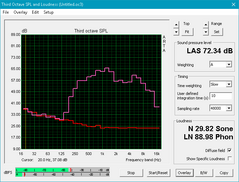
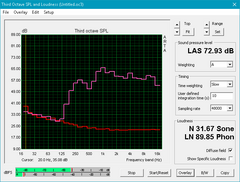
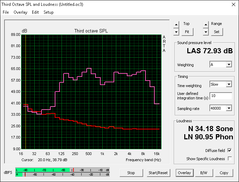
HP Envy x360 15m-bq121dx audio analysis
(-) | not very loud speakers (65.5 dB)
Bass 100 - 315 Hz
(-) | nearly no bass - on average 15.1% lower than median
(-) | bass is not linear (15.3% delta to prev. frequency)
Mids 400 - 2000 Hz
(+) | balanced mids - only 4.8% away from median
(±) | linearity of mids is average (7.4% delta to prev. frequency)
Highs 2 - 16 kHz
(+) | balanced highs - only 2.3% away from median
(±) | linearity of highs is average (7.8% delta to prev. frequency)
Overall 100 - 16.000 Hz
(±) | linearity of overall sound is average (26.3% difference to median)
Compared to same class
» 82% of all tested devices in this class were better, 3% similar, 15% worse
» The best had a delta of 6%, average was 20%, worst was 57%
Compared to all devices tested
» 80% of all tested devices were better, 4% similar, 16% worse
» The best had a delta of 4%, average was 24%, worst was 134%
Apple MacBook 12 (Early 2016) 1.1 GHz audio analysis
(+) | speakers can play relatively loud (83.6 dB)
Bass 100 - 315 Hz
(±) | reduced bass - on average 11.3% lower than median
(±) | linearity of bass is average (14.2% delta to prev. frequency)
Mids 400 - 2000 Hz
(+) | balanced mids - only 2.4% away from median
(+) | mids are linear (5.5% delta to prev. frequency)
Highs 2 - 16 kHz
(+) | balanced highs - only 2% away from median
(+) | highs are linear (4.5% delta to prev. frequency)
Overall 100 - 16.000 Hz
(+) | overall sound is linear (10.2% difference to median)
Compared to same class
» 7% of all tested devices in this class were better, 2% similar, 91% worse
» The best had a delta of 5%, average was 18%, worst was 53%
Compared to all devices tested
» 4% of all tested devices were better, 1% similar, 94% worse
» The best had a delta of 4%, average was 24%, worst was 134%
Frequency Comparison (Checkbox selectable!)
Graph 1: Pink Noise 100% Vol.; Graph 2: Audio off
Energy Management
Power Consumption
The Ryzen-based HP is roughly comparable to notebooks powered by ULV Intel CPUs and entry-level Nvidia GPUs. The Xiaomi Mi Pro is perhaps the best example of this as it carries the i5-8350U CPU, MX150 GPU, and the same size 1080p IPS display as our Ryzen HP. When subjected to average (3DMark06) and Witcher 3 loads, both systems are nearly identical at 46 W to 51 W each. The performance-per-Watt is still very slightly in Nvidia's favor as the MX150 is about 15 percent faster than the integrated Vega 8 as shown by our 3DMark scores without drawing much more from the outlet. The higher-end Spectre x360 15 (i7-8550U, MX150, 4K UHD) SKU is measurably more power-hungry than our Ryzen Envy x360 15 by almost 15 W when running Witcher 3. Despite this, the systems are actually very close in performance-per-Watt when taking into account both the more demanding NVMe SSD and brighter and denser display of the Spectre.
Running Witcher 3 on an external monitor demands 41.3 W compared to 45.8 W if on the internal display.
Notebooks with Intel U-class processors and integrated HD Graphics are still more power efficient than our Ryzen system. The 15.6-inch Dell Latitude 5580 with an i5-7300U, for example, draws about 30 W when under medium loads or higher compared to 45+ W on the AMD Envy notebook. Power consumption is only a few Watts less than the 15.6-inch Acer Aspire E5-574 with the Iris Graphics 550 when under demanding loads.
Maximum load with both Prime95 and FurMark running simultaneously will draw about 50 W from a small (7.5 x 7.5 x 3.0 cm) 65 W AC adapter compared to 77 W on the Intel- and Nvidia-powered Spectre x360 15. The discrepancy can be contributed to the 15 W i7-8550U CPU + 25 W MX150 GPU alongside the more demanding components of the Spectre compared to the single 25 W cTDP Ryzen 5 APU and dimmer FHD screen of our Envy.
It's interesting to mention that the 65 W adapter appears to be a special case for the AMD model. The equivalent Intel Envy x360 15 alternative, for example, ships with either a 45 W or 90 W adapter depending on the configuration.
| Off / Standby | |
| Idle | |
| Load |
|
Key:
min: | |
| HP Envy x360 15m-bq121dx R5 2500U, Vega 8, HGST Travelstar 7K1000 HTS721010A9E630, IPS, 1920x1080, 15.6" | Xiaomi Mi Notebook Pro i5 i5-8250U, GeForce MX150, Samsung PM961 MZVLW256HEHP, IPS LED, 1920x1080, 15.6" | HP Spectre x360 15-bl002xx i7-7500U, GeForce 940MX, Toshiba XG4 NVMe (THNSN5512GPUK), IPS, 3840x2160, 15.6" | HP Envy x360 15t-w200 i7-7500U, GeForce 930MX, WDC Slim WD10SPCX-24HWST1, IPS, 1920x1080, 15.6" | HP Spectre x360 15t-bl100 i5-8550U, GeForce MX150, Samsung PM961 NVMe MZVLW512HMJP, IPS, 3840x2160, 15.6" | Lenovo Yoga 720-15IKB-80X7 i7-7700HQ, GeForce GTX 1050 Mobile, Samsung PM961 MZVLW256HEHP, IPS, 1920x1080, 15.6" | |
|---|---|---|---|---|---|---|
| Power Consumption | 8% | -26% | 16% | -54% | -59% | |
| Idle Minimum * (Watt) | 5.9 | 3.7 37% | 8.14 -38% | 5 15% | 11.6 -97% | 8.3 -41% |
| Idle Average * (Watt) | 8.7 | 7.5 14% | 10.91 -25% | 8.3 5% | 13.8 -59% | 10.2 -17% |
| Idle Maximum * (Watt) | 10.5 | 8 24% | 12.26 -17% | 7.8 26% | 14.2 -35% | 10.4 1% |
| Load Average * (Watt) | 45.7 | 49 -7% | 45.67 -0% | 28.8 37% | 67.9 -49% | 67.5 -48% |
| Witcher 3 ultra * (Watt) | 45.8 | 50.6 -10% | 59 -29% | 96.5 -111% | ||
| Load Maximum * (Watt) | 49.4 | 55.2 -12% | 74.94 -52% | 49.7 -1% | 76.9 -56% | 117.2 -137% |
* ... smaller is better
Battery Life
HP has upped the internal battery capacity from 48 Wh on last year's Envy x360 15 to 55.8 Wh on this latest iteration. Capacity is still rather small compared to the the 70+ Wh batteries found in the 15.6-inch Spectre x360 and Yoga 720 series and the relatively short battery life of the AMD-powered system reflects this. At about 6.5 hours of real-world WLAN use before automatic shutdown, this is about 2 hours shorter than on the aforementioned Lenovo or higher-end Spectre equivalent. On the bright side, WLAN runtimes are slightly longer than on last year's Envy x360 with its now-outdated GeForce 940MX GPU.
Charging from near empty to full capacity takes just 1.5 hours compared to 2 hours on most other notebooks.
| HP Envy x360 15m-bq121dx R5 2500U, Vega 8, 55.8 Wh | Lenovo Yoga 720-15IKB-80X7 i7-7700HQ, GeForce GTX 1050 Mobile, 72 Wh | HP Spectre x360 15-bl002xx i7-7500U, GeForce 940MX, 79.2 Wh | HP Envy x360 15t-w200 i7-7500U, GeForce 930MX, 48 Wh | HP Spectre x360 15t-bl100 i5-8550U, GeForce MX150, 79.2 Wh | Dell XPS 15 9560 (i7-7700HQ, UHD) i7-7700HQ, GeForce GTX 1050 Mobile, 97 Wh | |
|---|---|---|---|---|---|---|
| Battery runtime | 36% | 53% | -3% | 50% | 23% | |
| Reader / Idle (h) | 10.9 | 17.8 63% | 14.4 32% | 10.6 -3% | 15.6 43% | 13.9 28% |
| WiFi v1.3 (h) | 6.6 | 8.1 23% | 8.9 35% | 5.3 -20% | 8.5 29% | 7.2 9% |
| Load (h) | 1.3 | 1.6 23% | 2.5 92% | 1.5 15% | 2.3 77% | 1.7 31% |
Pros
Cons
Verdict
Since this is the first commercially available notebook equipped with Raven Ridge, our verdict can be split into two parts. The first part relates to the AMD hardware itself. On paper, the 25 W cTDP Ryzen 5 2500U APU and RX Vega 8 GPU are able to stand neck-to-neck with current 15 W Kaby Lake-R options (i5-8250, i7-8550U) while outperforming even the Iris Pro Graphics 580 in synthetic benchmarks. Combine this with the generally lower price tag and there is seemingly no reason to choose Intel over AMD with all else being equal.
Unfortunately for AMD, all else is not equal and Raven Ridge is simply not yet ready for prime time. Our test unit is extraordinarily slow and suffers from random crashes. In particular, the system would crash more frequently when stressing the GPU or running gaming loads similar to the previous generation of AMD Dual Graphics notebooks like on the Asus FX550IU. Synthetic benchmarks may reveal the Vega 8 to be faster than the aging GeForce 940MX, but the opposite is true when running most modern games. This is classic AMD for better or worse - excellent performance-per-Dollar that's ultimately dragged down by inferior drivers and developer support.
Potential buyers who are drawn in by the impressive processor performance will find the lower price attractive over an Intel Kaby Lake-R equivalent. On the other hand, gamers will find nothing but disappointment in the RX Vega 8 until its drivers are up to speed. It may be over twice as powerful as the UHD Graphics 620 in synthetic tests, but the MX150 is still the better investment for reliable 1080p gaming on a budget.
The second part of our verdict is on the HP notebook as a whole. The manufacturer has successfully incorporated Spectre-class narrow bezels onto its mainstream Envy lineup that's sleeker and just as tough as the outgoing generation. Beyond the chassis redesign, however, not much else has improved. This was HP's chance to boost all aspects of the Envy x360 15 series but we instead have the same dim 1080p touchscreen, limited color space, and PWM characteristics as last year's model. The speakers, SD reader, keyboard, trackpad, hinges, overall weight, and pulsing fan noise aren't tangibly improved over the 2016 model, either. The biggest draw, then, is the slimmer looks and perhaps the slightly longer battery life and USB Type-C Gen. 1 port on this latest redesign.
AMD's new Raven Ridge platform is a commendable achievement, but it's too bad that it suffers from the same poor software and driver issues that have been plaguing the chipmaker for years. We cannot recommend this HDD-based AMD HP system at least until the GPU glitches have been patched.
HP Envy x360 15m-bq121dx
- 11/30/2017 v6 (old)
Allen Ngo




